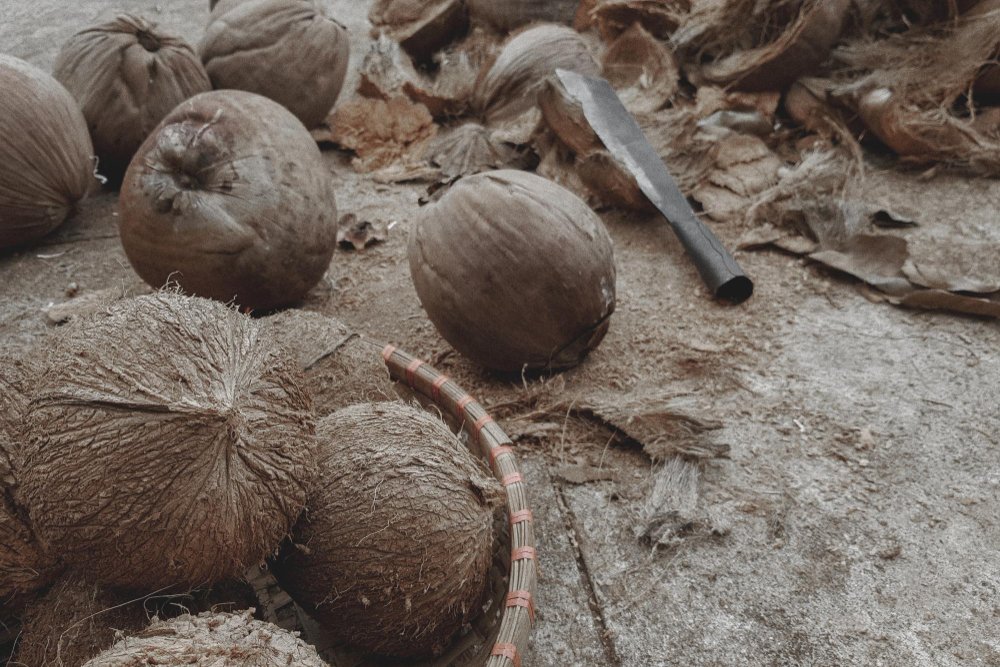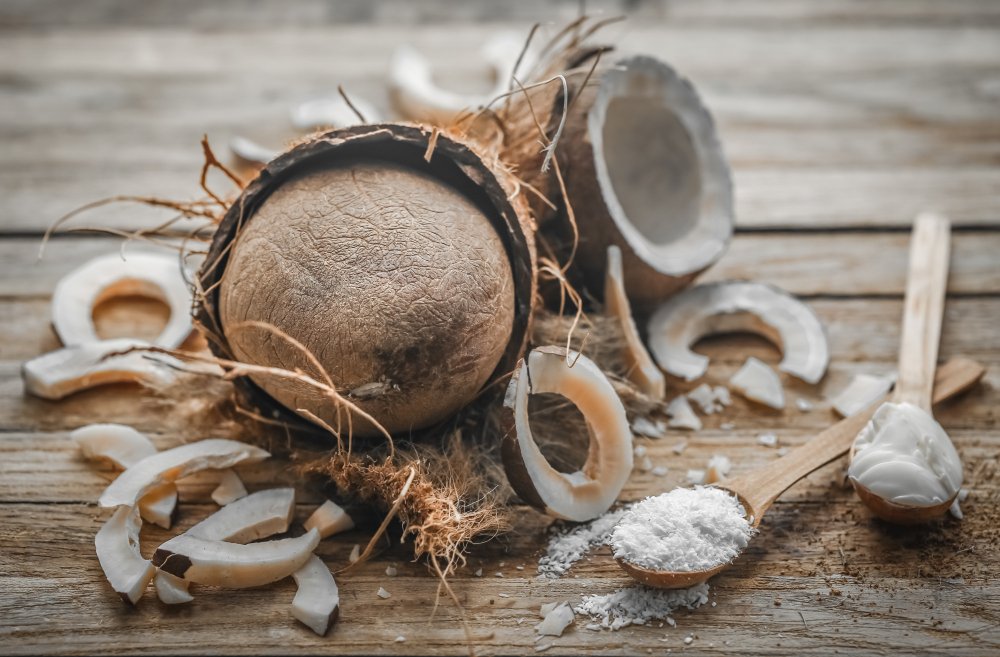The coconut palm, a symbol of tropical paradise, yields much more than its delicious fruit. Vast quantities of coconut waste – husks, shells, leaves, and water – are generated annually, often ending up in landfills, contributing to environmental problems. But what if this seemingly useless byproduct could be transformed into valuable resources? Recent innovations are proving that coconut waste isn’t waste at all, but a treasure trove of untapped potential, offering a sustainable and profitable future for coconut-producing regions. This article explores the exciting advancements in processing coconut waste into high-value products, showcasing the potential for economic growth and environmental protection.
Transforming Coconut Waste: A New Dawn
The traditional disposal methods for coconut waste – burning or dumping – are not only environmentally damaging but also represent a significant loss of valuable resources. Burning contributes to air pollution, while dumping leads to soil contamination and methane emissions. However, a new dawn is breaking. Scientists and entrepreneurs are actively researching and developing innovative techniques to transform this abundant waste stream into a range of useful products. This shift in perspective is driven by a growing awareness of the need for sustainable practices and the recognition of the economic opportunities presented by coconut waste valorization. The potential is enormous, promising a more environmentally friendly and economically viable future for coconut-producing communities. This transformation not only benefits the environment but also empowers local economies and creates new employment opportunities.
The development of sophisticated technologies is a key driver of this transformation. Advanced bioprocessing techniques, for example, allow for the extraction of valuable compounds from coconut waste that can be used in various industries. These include the extraction of bioactive compounds with potential applications in pharmaceuticals, cosmetics, and food additives. Furthermore, the development of efficient and cost-effective methods for processing large volumes of coconut waste is making these innovations more accessible to communities in developing countries. This accessibility is crucial for maximizing the impact of these technologies and ensuring that the benefits reach those who need them most.
Innovative approaches to waste management are also playing a crucial role. Instead of treating coconut waste as a disposal problem, it’s now being viewed as a valuable resource that can be integrated into circular economy models. This means that waste from one process becomes the raw material for another, minimizing waste and maximizing resource utilization. This holistic approach is transforming the way we think about waste management, moving away from linear models towards more sustainable and circular systems. The integration of coconut waste into existing supply chains is also creating new opportunities for businesses and communities.
The potential for upscaling these innovative technologies is immense. With further investment in research and development, along with supportive policies and infrastructure, the transformation of coconut waste into high-value products can be significantly accelerated. This scaling up will not only have a substantial environmental impact but also unlock considerable economic benefits for coconut-producing regions globally. The future of coconut waste management is bright, promising a future where waste is transformed into wealth.
Unveiling Hidden Value in Coconut Byproducts
Coconut husks, often discarded as useless, are proving to be a goldmine of valuable materials. Their fibrous structure can be processed into coir, a natural fiber used in various applications, from geotextiles and brushes to upholstery and gardening products. The resilience and durability of coir make it a sustainable alternative to synthetic materials, contributing to a greener environment. Furthermore, coir can be used to create environmentally friendly packaging solutions, reducing reliance on plastic and other non-biodegradable materials.
Coconut shells, another abundant byproduct, possess unique properties that make them suitable for a variety of applications. They can be converted into activated carbon, a highly porous material with excellent adsorption capabilities, used in water purification and environmental remediation. The shells can also be processed into biochar, a soil amendment that improves soil fertility and water retention, offering benefits to agriculture and sustainable land management. Moreover, innovative techniques are transforming coconut shells into biofuel, providing a renewable energy source.
Coconut water, often overlooked, is rich in nutrients and electrolytes. While it’s increasingly popular as a beverage, research is exploring its potential in other applications, such as the production of cosmetics and pharmaceuticals. The high concentration of beneficial compounds in coconut water offers exciting possibilities for the development of new products with health and beauty benefits. This exploration of coconut water’s potential extends beyond its direct consumption, transforming it from a simple byproduct into a valuable ingredient in various industries.
Beyond the individual components, integrated approaches are unlocking even greater value. For example, combining the fibers from husks with the shell particles can lead to the creation of composite materials with enhanced properties, suitable for construction and other industrial applications. This integrated approach maximizes the utilization of all coconut byproducts, minimizing waste and maximizing resource efficiency. The synergistic potential of combining different coconut waste streams is a key area of ongoing research and development.
Sustainable Solutions: Coconut Waste Reimagined
The conversion of coconut waste into valuable products offers a compelling model for sustainable development. By diverting waste from landfills and transforming it into useful resources, we reduce environmental pollution and conserve natural resources. The production of biochar from coconut shells, for instance, contributes to carbon sequestration, mitigating climate change. The use of coir as a sustainable alternative to synthetic materials reduces our reliance on non-renewable resources and minimizes plastic pollution.
These innovations contribute to a circular economy, where waste is minimized and resources are maximized. Instead of a linear “take-make-dispose” model, coconut waste valorization embodies a circular approach, where waste from one process becomes the raw material for another. This closed-loop system reduces environmental impact while creating economic opportunities. This circular economy model is not only environmentally responsible but also economically viable, creating a win-win situation for both the environment and the economy.
The development of these sustainable solutions often involves empowering local communities. By providing training and access to technology, we can ensure that the benefits of coconut waste valorization reach those who need them most. This participatory approach fosters economic development and strengthens local resilience. Furthermore, the creation of local businesses focused on coconut waste processing can generate employment opportunities and improve livelihoods in coconut-producing regions.
The integration of these sustainable solutions into existing supply chains is crucial for scalability and impact. By collaborating with businesses and industries that utilize the products derived from coconut waste, we can ensure a consistent market for these materials and accelerate the adoption of these sustainable practices. This collaboration is essential for creating a truly sustainable and impactful approach to coconut waste management. The future of sustainable development is intertwined with innovative solutions like these.
Profitable Pathways: Coconut’s Waste-to-Wealth Journey
The transformation of coconut waste into high-value products presents significant economic opportunities. The production of coir, activated carbon, and biochar, for example, can generate substantial revenue for businesses and communities involved in the process. The growing market demand for sustainable and eco-friendly materials creates a strong incentive for investment in this sector. This economic potential is a powerful driver for innovation and adoption of these technologies.
The creation of new businesses and industries around coconut waste processing can generate significant employment opportunities, particularly in rural and developing communities. This economic empowerment can lead to improved livelihoods and reduced poverty in coconut-producing regions. The development of local processing facilities and supply chains can create a ripple effect, stimulating economic growth and improving the overall well-being of these communities.
The potential for export markets further enhances the economic viability of coconut waste valorization. The demand for sustainable and eco-friendly products is increasing globally, creating opportunities for coconut-producing countries to access international markets and generate foreign exchange earnings. This access to global markets can significantly contribute to economic development and improve the competitiveness of these regions.
The economic benefits of coconut waste valorization are not limited to direct revenue generation. The reduction of environmental damage associated with traditional waste disposal methods also leads to significant cost savings. This includes reduced costs associated with waste management, landfilling, and environmental remediation. The long-term economic benefits of sustainable waste management practices are substantial and far-reaching.
The innovations in processing coconut waste into high-value products represent a paradigm shift in how we view waste. It’s no longer a disposal problem but a valuable resource waiting to be unlocked. By embracing sustainable practices and investing in innovative technologies, we can transform coconut waste into a source of economic prosperity and environmental protection. The journey from waste to wealth is not just a possibility; it’s a compelling reality that promises a brighter and more sustainable future for coconut-producing communities and the planet.


